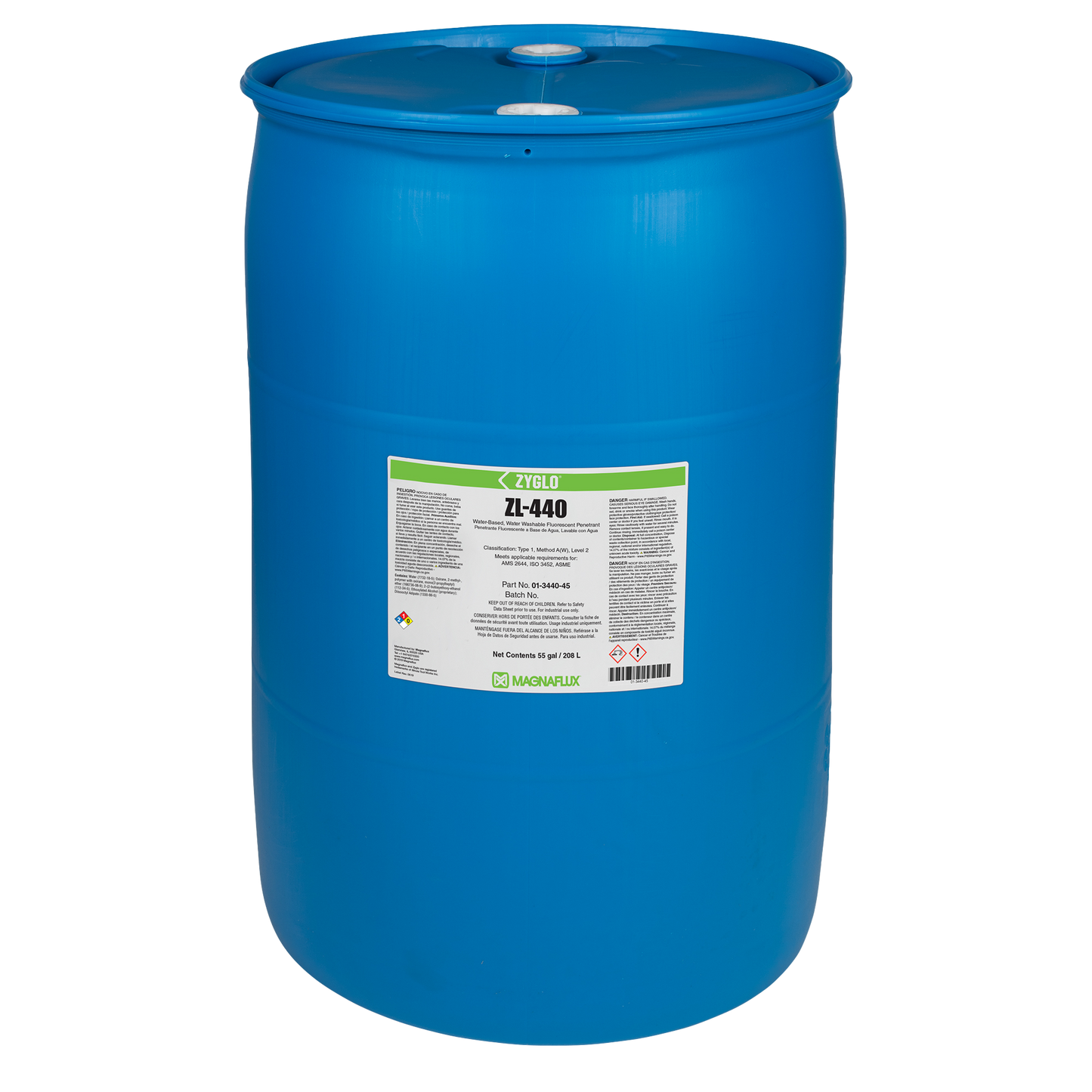
Level 2 Water-Based, Water-Washable Fluorescent Penetrant
ZL-440 is a water-based, water-washable fluorescent penetrant used for finding indications in castings, forgings, extrusions and other materials with rough surfaces commonly found in automotive part applications. ZL-440 is an ideal solution when waste water produced during the inspection process is a concern for the operation. ZL-440 is water based and contains no petroleum distillates which may allow its rinse water to be disposed of directly into the sewage system depending on local regulations.
The penetrant features great rinse characteristics, and depending on the application and specification may be used without a developer.
ZL-440 is designed with environmental health and safety in mind while meeting industry performance standard approvals, including EN ISO 3452-2 and AMS 2644, and can be used in similar applications as other conventional Level 2 water-washable fluorescent penetrants.
BENEFITS
Reduce environmental footprint and waste-water pollutants
- Reduce water treatment costs and discharge waste process water directly into the sewage system (depending on local regulations) due to minimal water-based contaminants.
- Meet or exceed local discharge regulations with low Biochemical Oxygen Demand (BOD) and Chemical Oxygen Demand (COD) levels.
- Support a healthy environment with waterbased penetrants that have minimal occupational health and safety impacts.
Reliably speed up inspection and wash processes
- Identify bright indications with superior sensitivity and low fluorescent background interference.
- Increase throughput and reduce costs by eliminating the developer step of inspection processes depending on procedures and requirements.
- Rapid rinse and post inspection washing of parts thanks to excellent washability properties, due to trade secret chemistry.
FEATURES
- Level 2, medium sensitivity
- Hydrocarbon-free
- Biodegradable
- Excellent water wash removability
- Developer may not be required

